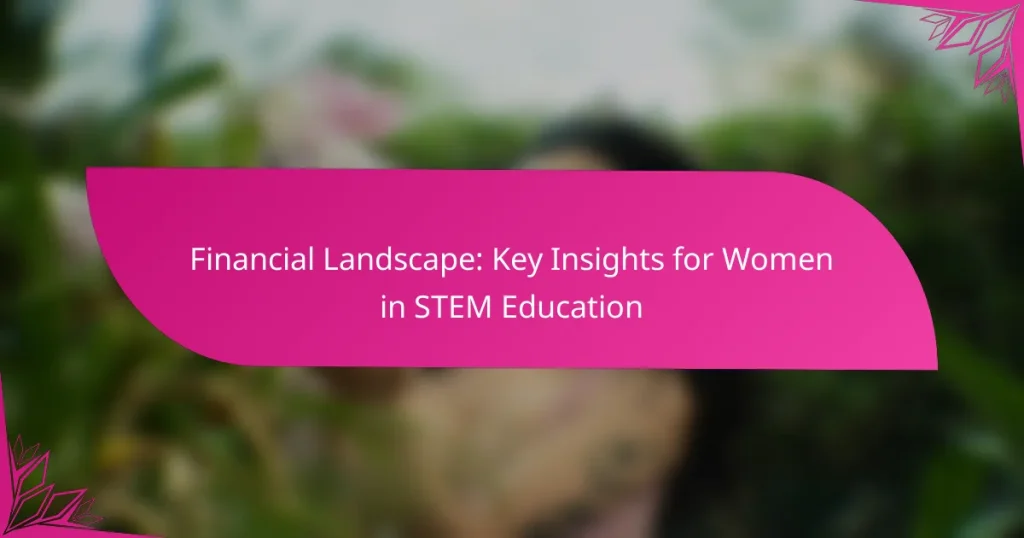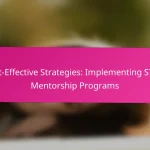The financial landscape for women in STEM education is rich with opportunities, including scholarships, grants, and federal funding programs tailored to support their academic and professional journeys. However, challenges such as gender bias in funding and underrepresentation in leadership roles persist, highlighting the need for targeted resources and mentorship. By leveraging available financial resources and mentorship opportunities, women can navigate these obstacles and thrive in their STEM careers.
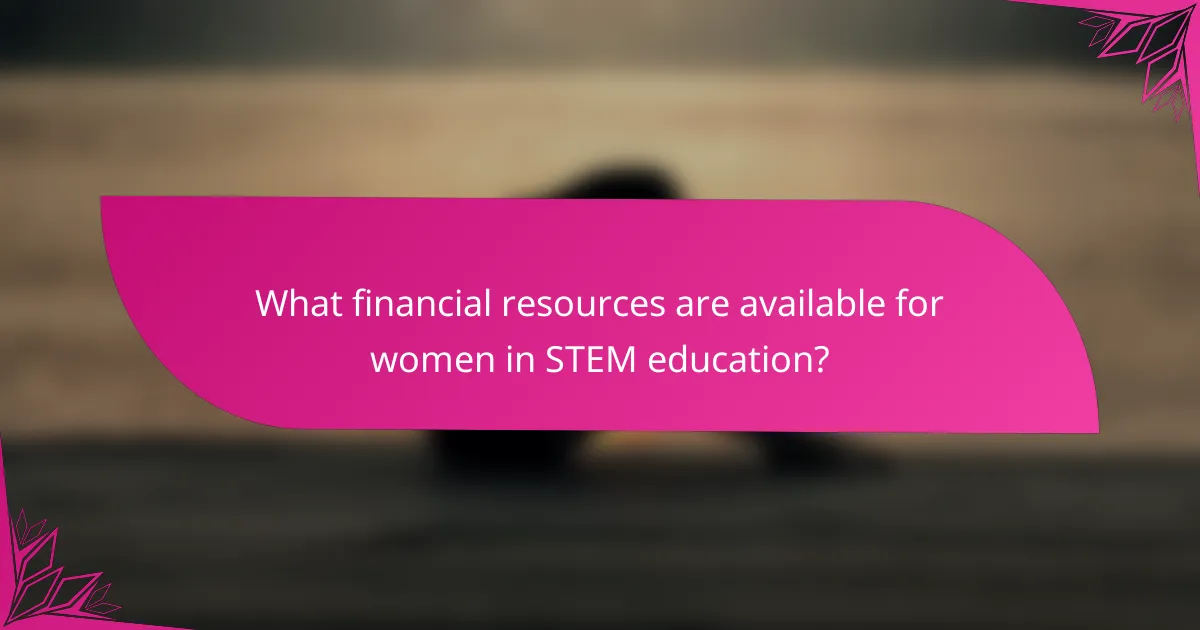
What financial resources are available for women in STEM education?
Women in STEM education can access a variety of financial resources, including scholarships, grants, federal funding programs, and private sector initiatives. These resources are designed to support women pursuing degrees and careers in science, technology, engineering, and mathematics.
Scholarships for women in STEM
Scholarships specifically for women in STEM are widely available and can significantly reduce educational costs. Organizations such as the Society of Women Engineers and the National Science Foundation offer scholarships that can range from a few hundred to several thousand dollars.
When applying for scholarships, focus on those that align with your specific field of study and meet eligibility criteria. Keep track of deadlines and required documents to enhance your chances of receiving funding.
Grants from organizations like AAUW
The American Association of University Women (AAUW) provides grants to women pursuing advanced degrees in STEM fields. These grants can help cover tuition, research expenses, and living costs, with amounts varying based on the specific program and applicant needs.
To apply for AAUW grants, prepare a strong proposal that outlines your educational goals, research plans, and how the funding will support your career in STEM. Be mindful of application deadlines and required documentation.
Federal funding programs
Federal funding programs, such as the Pell Grant and the National Science Foundation Graduate Research Fellowship, offer financial assistance to women in STEM education. These programs typically require applicants to demonstrate financial need or academic merit.
Research the eligibility requirements and application processes for these federal programs. Many require submission of the Free Application for Federal Student Aid (FAFSA) to determine financial need, so be sure to complete this early.
Private sector initiatives
Many companies in the tech and engineering sectors provide scholarships and internships specifically for women in STEM. These initiatives not only offer financial support but also valuable networking opportunities and real-world experience.
Explore opportunities with companies like Google, Microsoft, and Lockheed Martin, which often have dedicated programs for women pursuing STEM careers. Tailor your applications to highlight your skills and experiences relevant to the industry.

How can women in STEM access mentorship opportunities?
Women in STEM can access mentorship opportunities through various channels, including professional organizations, dedicated mentorship programs, and university initiatives. These avenues provide valuable connections, guidance, and resources to help navigate careers in science, technology, engineering, and mathematics.
Networking through professional organizations
Professional organizations offer a platform for women in STEM to connect with experienced mentors and peers. Joining associations like the Society of Women Engineers or the Association for Women in Science can facilitate networking events, workshops, and conferences where mentorship opportunities abound.
Consider attending local chapter meetings or national conferences to meet potential mentors. Engaging actively in these organizations can lead to meaningful relationships that foster professional growth.
Mentorship programs like STEMConnector
Programs such as STEMConnector provide structured mentorship opportunities specifically designed for women in STEM fields. These programs often pair mentees with industry leaders who can offer insights, advice, and support tailored to individual career paths.
To participate, women can apply through the program’s website, where they may find various resources, including webinars and networking events. Engaging with these programs can significantly enhance career prospects and expand professional networks.
University-led initiatives
Many universities have established mentorship initiatives aimed at supporting women in STEM. These programs often connect students with faculty members or alumni who can provide guidance and career advice based on their experiences.
Students should explore their university’s career services or STEM departments to find available mentorship programs. Participating in these initiatives can lead to internships, research opportunities, and valuable industry connections that are crucial for career advancement.
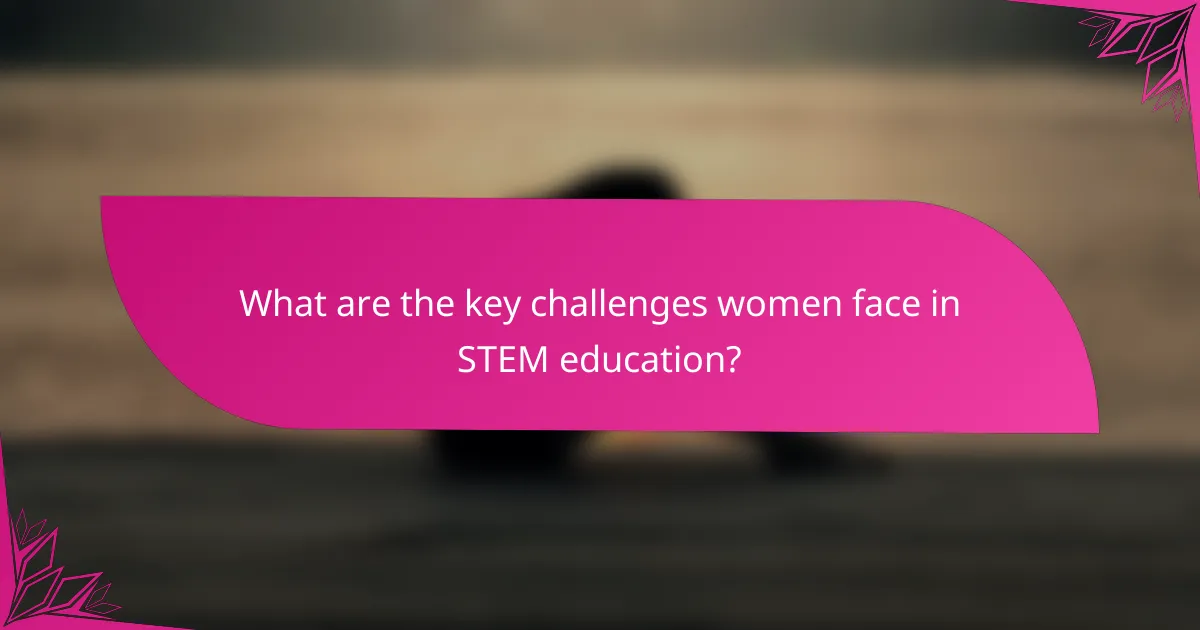
What are the key challenges women face in STEM education?
Women in STEM education encounter several significant challenges, including gender bias in funding, lack of representation in leadership roles, and work-life balance issues. These barriers can hinder their progress and success in these fields, making it crucial to address them effectively.
Gender bias in funding
Gender bias in funding is a persistent issue that affects women’s access to financial resources for STEM education and projects. Research indicates that women-led initiatives often receive less funding compared to their male counterparts, which can limit opportunities for growth and innovation.
To combat this bias, women should actively seek out grants and funding opportunities specifically aimed at supporting female entrepreneurs and researchers. Networking with organizations that promote gender equity in STEM can also provide valuable resources and connections.
Lack of representation in leadership roles
The underrepresentation of women in leadership positions within STEM fields creates a cycle that perpetuates gender inequality. When women do not see others like themselves in leadership roles, it can discourage them from pursuing similar paths.
To address this challenge, organizations should implement mentorship programs that connect aspiring female leaders with established women in STEM. Additionally, advocating for policies that promote diversity in hiring and promotions can help create a more inclusive environment.
Work-life balance issues
Work-life balance is a critical concern for women in STEM, as they often face the dual pressures of professional responsibilities and personal commitments. This imbalance can lead to burnout and affect their overall career satisfaction.
Women can benefit from establishing clear boundaries between work and personal life, as well as seeking flexible work arrangements when possible. Companies should also consider offering support programs, such as childcare services or remote work options, to help employees manage their responsibilities more effectively.
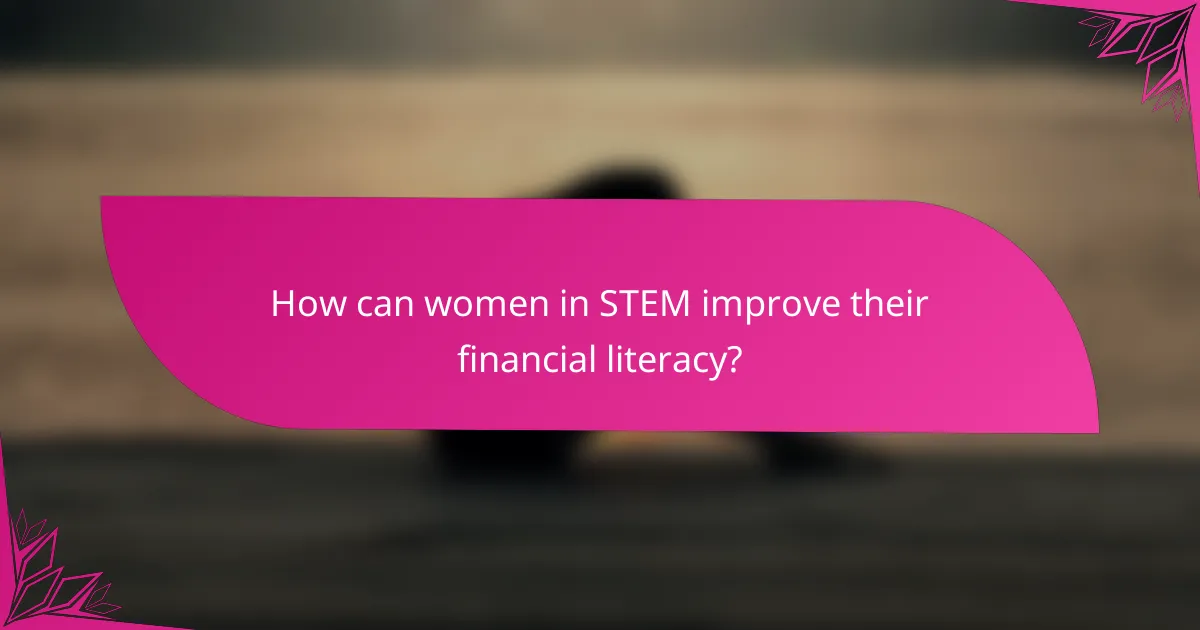
How can women in STEM improve their financial literacy?
Women in STEM can enhance their financial literacy by actively seeking educational resources and practical experiences that focus on money management and investment strategies. Building a solid foundation in these areas empowers them to make informed financial decisions and achieve long-term financial goals.
Workshops on budgeting and investing
Participating in workshops focused on budgeting and investing can provide hands-on experience and practical knowledge. These workshops often cover essential topics such as creating a budget, understanding investment options, and managing debt effectively.
Look for local community centers, universities, or professional organizations that offer these workshops. Many are free or low-cost, making them accessible to a wide audience. Engaging with peers in these settings can also foster networking opportunities.
Online courses from platforms like Coursera
Online platforms like Coursera offer a variety of courses tailored to financial literacy, covering subjects from personal finance to investment strategies. These courses are often designed by reputable institutions and can be completed at your own pace.
Consider enrolling in courses that provide certifications, as these can enhance your resume and demonstrate your commitment to financial education. Many courses are available for free or at a low cost, making them an affordable option for continuous learning.
Financial planning resources from organizations
Numerous organizations provide financial planning resources specifically aimed at women in STEM. These resources may include articles, webinars, and one-on-one financial coaching to help navigate financial challenges.
Explore resources from organizations such as the American Association of University Women (AAUW) or local women’s business groups. Utilizing these resources can equip you with tailored advice and strategies to improve your financial situation and career trajectory.

What role do organizations play in supporting women in STEM?
Organizations play a crucial role in supporting women in STEM by providing resources, mentorship, and opportunities for professional development. They create initiatives aimed at closing the gender gap in science, technology, engineering, and mathematics fields, fostering an inclusive environment that encourages women’s participation and advancement.
Initiatives by the National Science Foundation
The National Science Foundation (NSF) implements various initiatives to promote gender equity in STEM education. Programs like the ADVANCE initiative focus on increasing the representation of women in academic STEM careers through institutional transformation and support for women faculty.
Additionally, the NSF offers funding opportunities for research projects that explore barriers faced by women in STEM. These grants encourage institutions to develop strategies that enhance recruitment, retention, and advancement of women in these fields.
Programs from the Society of Women Engineers
The Society of Women Engineers (SWE) provides numerous programs designed to support women pursuing engineering careers. Their outreach initiatives target young girls, encouraging interest in engineering through hands-on activities and mentorship from professionals in the field.
SWE also offers scholarships and professional development resources, including workshops and networking events. These programs help women build essential skills and connect with peers and industry leaders, fostering a supportive community that promotes career advancement.
